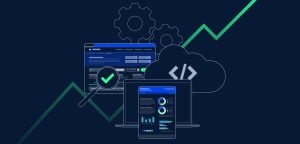”We need to build a secure portal, to give our clients access to valuable information” is not an uncommon challenge across Asset Management and one that’s likely been uttered in digital, sales, client reporting, and marketing team meetings for the last few years. But what makes it different to your plain old website build? Why is it that this statement will attract eyes and questions around ownership from IT security, tech teams, client services, and operations, not to mention the sales and distribution teams? Why is a secure portal so different? More to the point, why does it become such a difficult project to get going?
Let’s break this down: a website and a portal are both digital products with a core purpose to provide information in a seamless way which allows users to educate themselves and, in many cases, do their jobs. Sounds super simple, but it’s not. We believe this is primarily a legacy issue for the following reasons:
Security: Historically CMS platforms (content management tools that businesses use to build public facing websites) were not the most secure. In many cases from a Tech / IT perspective, these systems were seen as a bit of a risk, so they would be the last place you’d build a portal for clients’ private data.
Scalability of your MVP: Everyone either loves or loathes the term MVP, but either way a client login / portal area would rarely make an MVP list from a pure marketing stance when tackling the infamous website re-platform. Often these projects are unable to expand from the original MVP, so is it any wonder that client reporting or distribution teams have found some budget and built a proprietary solution with an external vendor?
Ownership: As a continuation / resulting factor from lack of scalability across traditional tools, the ownership of portals has typically fallen outside of the realm of marketing / digital teams, as getting alignment of prioritisation for integration of the tools is near on impossible.
Ongoing Maintenance: Having a login means having a password, and having a password means you’ll forget it, or you’ll get locked out. Who will provide support and maintenance? The digital / marketing teams are likely equipped to deal with this, but see above ownership – it doesn’t sit with them.
So, back to reality time. Let’s just put it out there… there is no material difference between a website and a client portal: they are both client facing, they both represent your brand, and they should both have the customer experience at their heart. So why differentiate?
With the evolution of technology, it’s time to change. It’s time to build your client facing portals like you would build a website or any digital application. Put the customer experience at the front and centre of the initiative and utilise tools that manage the scary bits like security, entitlement, permissions, and self-service so you are no longer restricted by templated service provider technology.
The end result will be your “portal” becoming an extension of your website and brand. Since it won’t be seen externally as something different, why should it be internally? This will create customer journeys that work for prospects, clients, and important stakeholders like investment consultants and journalists alike. This will also give you two key data sets in one place, with permissions and entitlements, and allow you to provide reporting, data drill-downs, and transactional level information from a single solution. A further benefit is deeper customer segmentation and personalisation, enabling the ability to unlock/lock features for specific content depending on how much you know, or can learn, about your portal visitor.
Just like your website, you will need to assemble tools and widgets to bring the content to life, so why differentiate in the technology used? At Kurtosys we have all of these elements wrapped up in easy to implement modules, and your portal becomes a sophisticated, but simply implemented, extension of your website.




